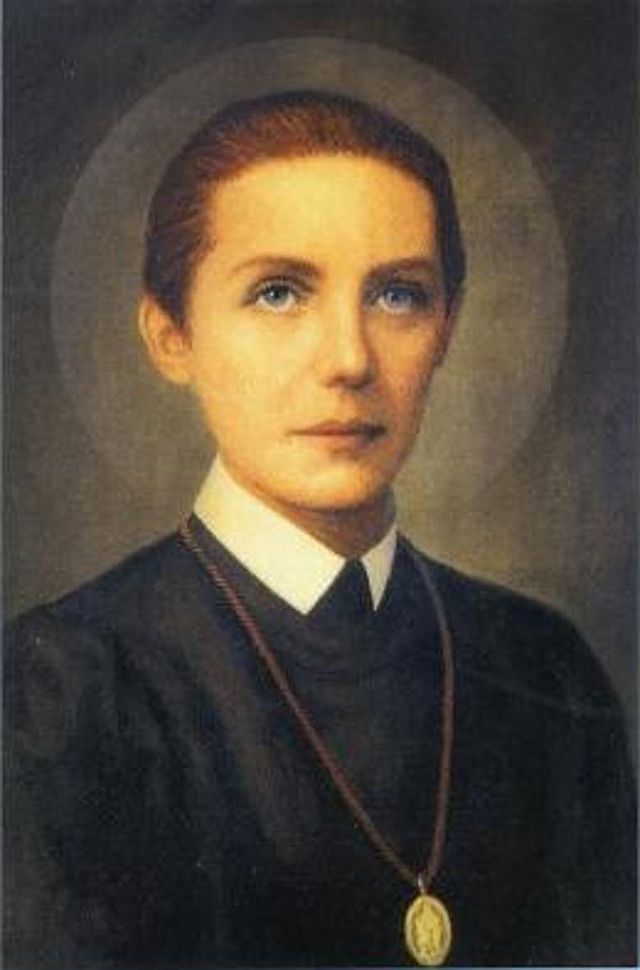
Blessed Maria Teresa Ledóchowska, The Missionary Who Was Never In The Missions
We discover the moving story of the founder of the Claverian Sisters, Blessed Maria Teresa Ledóchowska
Maria Theresa had it all. She was noble, daughter of counts, of an illustrious family. She liked balls and parties. She of wealth and sumptuousness. The poor were far away. But she looked for them. And I found them.
Her family was of Polish origin, but María Teresa Ledóchowska was born in the Austrian town of Loosdorf on April 29, 1863
She was one of seven children of Count Antoni Halka Ledóchowski and his wife, Countess Josefina Salis Zizers.
María Teresa was a studious girl, with artistic talents for music and painting.
She studied in religious schools and from an early age she lived with intensity the religious fervor that was breathed in her home.
A faith that, in addition to Maria Teresa, will bear fruit in two of her brothers, since her sister Giulia, sanctified as Saint Ursula, founded the Ursuline Sisters of the Agonizing Sacred Heart and one of her brothers, Wlodimir, was Superior General of the Jesuits.
Maria Teresa Ledóchowska continued to deepen her faith
A faith that she intensified when in 1885 she fell ill with smallpox. She survived the disease, but her father did not, who passed away leaving a terrible emotional void and a worrying financial situation in the family.
In the same year she went to the court of Fernando IV and Alicia de Parma, Grand Duchess of Tuscany, to act as lady-in-waiting and thus alleviate somewhat the financial situation of her widowed mother.
While she was at the ducal court she met some women who were part of the Franciscan Missionaries of Mary and who had come to ask the dukes for help with their projects in Africa.
She was deeply impressed by the work those nuns did.
It was in that period that she too came across the writings of Cardinal Carlo Lavigerie, founder of the White Fathers for the evangelization of Africa, who denounced the situation of slavery in which, still at the end of the 19th century, many people lived in Third World.
María Teresa Ledóchowska began to clearly draw what her future would be
For the time being, around 1890, she decided to found a magazine, Eco de África, in which to collect all the information she could about the missionary projects that were being carried out in the Black Continent to obtain support.
Increasingly involved and aware, she writes a novel, Zaida, in which she recreates the harsh existence of a slave woman and she founds another newspaper, El mucho negro, aimed at young people.
A year later, in 1891, she informed her wife that she was leaving the palace to concentrate body and soul on what would be her great life project.
In the following years she developed the idea of creating a religious congregation centered on missions. Inspired by San Pedro Claver, a Spanish Jesuit who did so much against slavery in Colombia, she met Pope Leo XIII who on April 29, 1894 approved the statutes of her congregation.
The Missionary Sisters of St. Peter Claver began their journey in Salzburg from where their idea took shape
While more and more young women joined Maria Teresa, she never stopped traveling around Europe exposing her project and conveying to the world the need to fight against social injustice where human beings suffered the most.
Her words were listened to with devotion by the people who gathered around him and, while some gave what they had, others put themselves at her service.
In 1910 the Holy See granted the definitive approval of a congregation which grew exponentially, becoming present on all continents.
Maria Teresa Ledóchowska never left Europe, she never set foot in Africa or any other distant place, but her name and her mission were so present in those abandoned corners of the world that she was popularly known as the “mother of the missions of Africa”.
On 6 July 1922 she died in the house of the Claverian Sisters in Rome.
Since then, her mission has continued to expand.
She was beatified by Paul VI on October 19, 1975.
Read Also
What Does It Take To Be A Nun?
My Mission As Ambassador Of The Works Of Mercy In Spazio Spadoni
Congo, The Right To Drinking Water And The Well In The Village Of Magambe-Isiro
Pearl And Angelica: The Two Sisters With Rosolini’s Mercy
Caritas Internationalis Elects Alistair Dutton As Its New Secretary General
Liturgy Of The Word: The Priest’s Kisses During Mass
